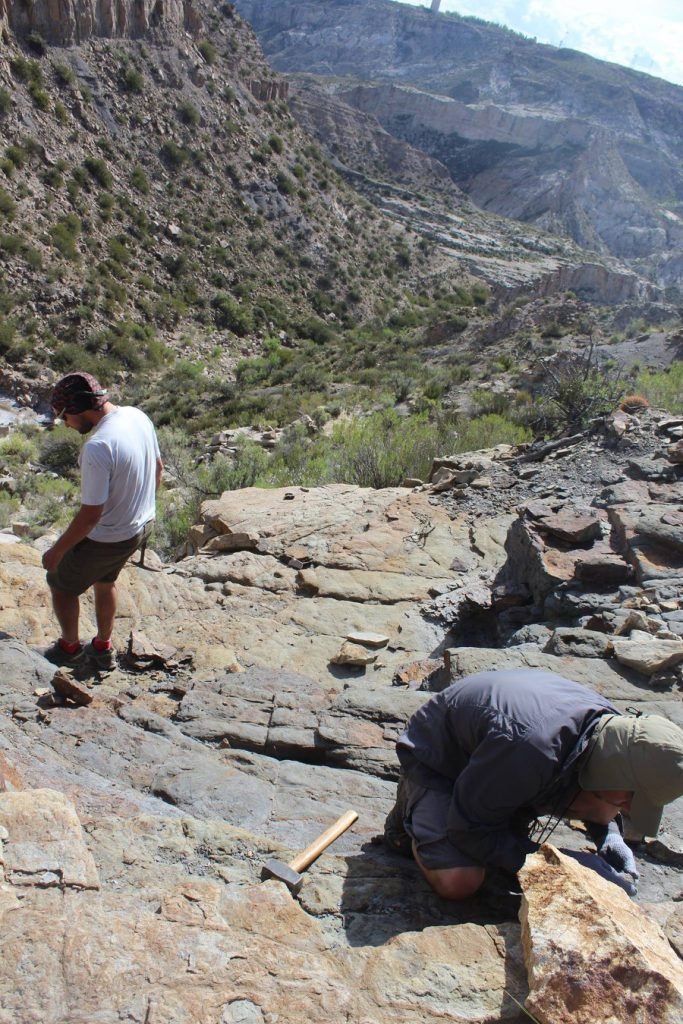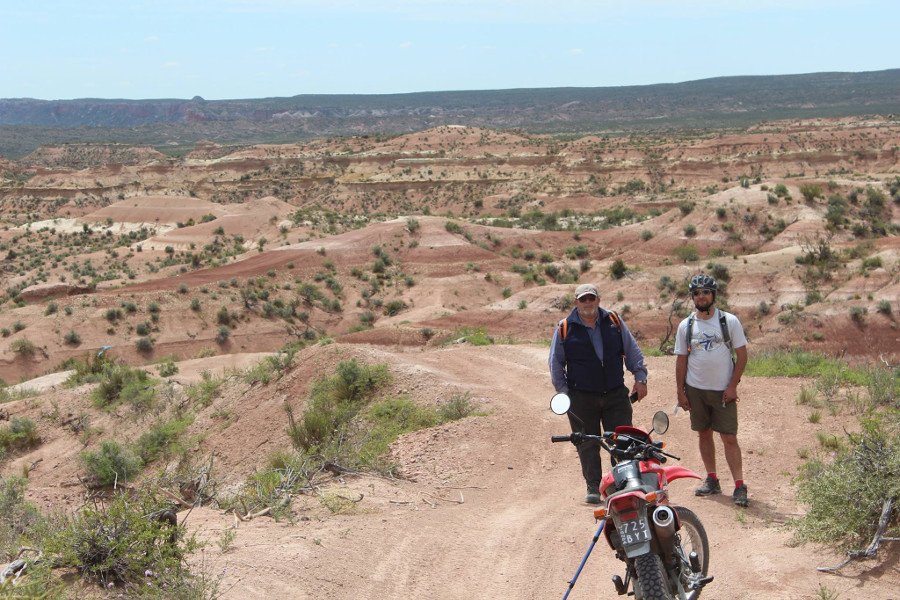Over 300 million years ago, today’s Pacific Ocean was covering a large area of SW South-america. A team of paleontologists travels that region in order to understand its climate and fauna, as well as the changes that affected it, during that time.
Dr. Alejandra Pagani, PhD, (CONICET-MEF) specializes in fossil invertebrates from the Upper Paleozoic, a period spanning from 350 to 300 million years in age. Every year, she carries out several field-trips in which she explores paleontological sites and collects fossils that old. Recently, she took a trip to the Argentinian provinces of Mendoza, San Juan and La Rioja. The team was lead by Dr. Arturo Taboada (CONICET-CIEMEP, Esquel) and Alejandra, and was formed by Dra. Karina Pinilla (CONICET-Museo de la Plata), Cristian Pardo, BSc (doctoral fellow, CONICET- CIEMEP), César Taboada (BSc student, UNPSJB), Technician Santiago Bessone (CONICET-CENPAT), and Soledad Vázquez, BSc (doctoral fellow, CONICET-CCT Mendoza).

“We wanted to collect fossils, but we also wanted our students to know and walk those sites, which hold outcrops that are typical of that period of time”, Alejandra comments. Materials collected during this field-trip (which official repository will be the “Museo de Historia Natural” [Museum of Natural History] in San Rafael, Mendoza) will allow infer climate, environment and paleogeography of this area by studying and comparing them with those found in some other sites. “Many of the units we´ve been visiting are the same age than some others in Chubut, whereas they present different faunas regarding a possible difference in the paleogeographic position of Patagonia (which was separated from the continent and in other geographic situation). These “precordillera” [Andes foothills] faunas would be showing a climatic improvement that is not seen Patagonia for that moment of time”, she details.
The field work in this region is complex, regarding many aspects. The sites of interest for this paleontologists’ team are located in the Andes foothills, therefore many of them have folds, have been eroded or under glaciers; this makes their geological and paleontological interpretation not an easy task. “The rise of the Andes generated very important movements in all the Upper Paleozoic sites. Thus, outcrops in some areas are fractured or the blocks are moved, what makes the work a bit more complicated” she comments.

Regarding accessibility, some of the places they had to explore weren´t that easy, either. Alejandra tells: “many of them are high, sometimes between 3000-3200 m. asl, so we had to climb or scale the gorges, for around two hours”. On this occasion, the paleontologists’ gear included motorbikes and bicycles! She shares the anecdote: “We had information of a level with fossils on a gorge at El Nihuil dam (Mendoza Province), but access was very difficult. Since we knew of a motocross track through which access was easier, we decided to go there, even though we had to take a long detour to get to the place. We parked our pick-ups at the end of the trial, and from there we had to ride and cycle for over 3 hours to arrive in the site”.
Despite the inconveniences and difficulties (not only regarding the terrain features, but also because they had to carry their work gear, as well as the water and food for the day, by themselves), the team members came back very satisfied with the progress made, for they could collect material and found new fossiliferous levels. This field-trip experience will enhance future explorations in the area.
